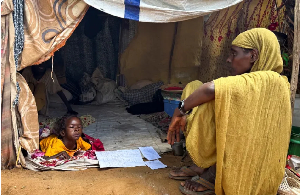The banner headline in the Daily Graphic of August 20, 2003, blared: “Remittances Fetch $1.4 bn”. The story goes on to explain, quoting the technical advisor to the Ministry of Regional Cooperation and NEPAD, Dr. Francis Appiah, that in 2002 alone “Ghanaians abroad remitted $1.4 billion into the country.”
This of course is not the first time a public official has cited the $1.4 billion figure in support of claims of increased remittances from “Ghanaians abroad.” Problem is, it is a false claim, much as we all would like to see such a huge amount of money leave the hands of hard-working Ghanaians abroad and find “safety” in the pockets of eager relatives back home.
The real nature of this oft-cited $1.4 billion appears on p.56 of the “State of the Ghanaian Economy in 2002 Report” produced by the University of Ghana’s Institute of Statistical, Social and Economic Research (ISSER) early this year. Quoting the Bank of Ghana, the institute reported that “private inward remittances” in 2002 amounted to $1,373,934,309 (or roughly $1.4 billion).
The report explains that the recipients of these remittances were “individuals, NGOs, churches, embassies and companies.” The report does not provide the sources of these remittances, but it is hard to imagine “Ghanaians abroad” sending their monies to embassies and NGOs in Ghana, for instance.
Clearly, only part of the $1.4 billion can be considered to be remittances from Ghanaians abroad to their relatives (“individuals”) in Ghana. No one knows the real amount because no one keeps data on such remittances, some of which go through non-bank channels. The standard procedure has been to extrapolate from balance of payments statistics, with estimates in the recent past ranging anywhere from $200 million to $400 million per year.
This is not to belittle the financial contributions of Ghanaians abroad to the development of Ghana but to point out the need to establish accurate statistics for development planning purposes. Establishing a viable financing scheme for a national development plan, for example, would require a wide range of accurate statistics; inflated statistics like “$1.4 billion” can only harm the plan.
On the day the advisor offered his statistics to the Graphic, the Minister of Trade, Industry and PSI, Mr. Alan Kyeremanteng, took his turn at the Meet the Press Series and, in an otherwise brilliant presentation, made the following declaration:
“Earnings from non-traditional exports that had stagnated at US$400 million between 1997 and 2000 have registered an increase to US$459.6 million (15% growth) and US$504.3 million (10% growth) in 2001 and 2002, respectively.”
Problem is, the Bank of Ghana’s 2001 annual report offers a starkly different picture of the state of non-traditional exports in 2001:
Page 66 of the report notes that there was a “decline in the number of [non-traditional] exporters as well as the number of products exported” in 2001. Thanks, however, to upward price movements in the products exported “the value of non-traditional commodities…exported in 2001 rose by 2.3 percent to US$245.1,” the report added. The difference between 2.3 percent and 15.0 percent is not trivial.
The variance in statistics may well be due to differences in the definition of “non-traditional exports” between the ministry and the central bank, but even that would be inexcusable. Effective management of the national economy requires close cooperation between various government organizations as well as coherence in the statistics that ultimately give expression to the government’s policy intentions.
Yet another statistical misrepresentation currently contaminating public discuss is the size of any potential increase in the VAT rate to finance the national health insurance scheme. It has been said that an increase from the current 12.5 percent to 15.0 percent would represent “only 2.5 percent”. That is wrong.
The percentage increase can be established by using the standard procedure for calculation percentages in anything, which is: The new number, divided by the old number, minus one, times 100. That means the increase in the VAT rate, if it occurs, would be equivalent to 20 (twenty) percent, and not 2.5 percent.
These are but only a few of the statistical inaccuracies that afflict public policy in Ghana today. There are many more out there, in government documents and in various policy pronouncements, with the result that public discourse is often contaminated accordingly.
Perhaps, we need a national statistics policy that would standardize the generation and dissemination of economic (and social) statistics for effective development planning and economic management. Until such standardization is introduced, we shouldn’t be surprised that government intentions and economic reality tend to follow divergent paths.















